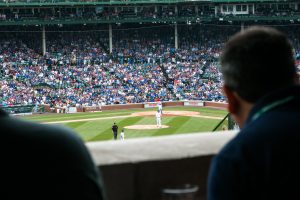America’s favorite pastime can become dangerous if fans do not pay attention to their surroundings. Foul balls and broken bats are common accidents within the ball park environment. When purchasing a game ticket, a fan is entering a contract to assume the risk of injury. In many instances, the “Baseball Rule” applies, where a fan cannot seek damages for wounds sustained during a major league game. One possible exception to that rule is when a child is involved.
On Wednesday, September 20th, Yankees’ third baseman, Todd Frazier, hit a 106-mph foul ball directly behind the third base dugout, into the nose and right eye of a young girl. The child, bloody in the face, was carried out of the area by her grandfather. She was taken to a nearby hospital, where it was undetermined if surgery was required. If the family of the young girl decides to pursue any legal action, the “Baseball Rule” may not apply. A young child does not maintain the mental capacity or responsibility to assume the risk of injury at a major league baseball game. Her injury could have been prevented.
In 2015, baseball commissioner, Rob Manfred, requested for the 30 major league teams to extend their protective netting. Since then, only about a third of the teams actually expanded their netting to at least the end of the dugouts. The Yankees, however, are not included in this percentage of teams that have taken the commissioner’s recommendation seriously. The team’s lack of compliance resulted in the injured face of a little girl. Had the netting extended to the end of the dugout, the young girl would not have been smashed with a line drive hit.
Some baseball fans have expressed complaints in regard to the protective netting, arguing that it distorts the view of the game. Many, however, would favor safety over how the game looks behind a net. Following this unfortunate incident, the Yankees have promised to make it a priority to extend their stadium’s protective barriers.
